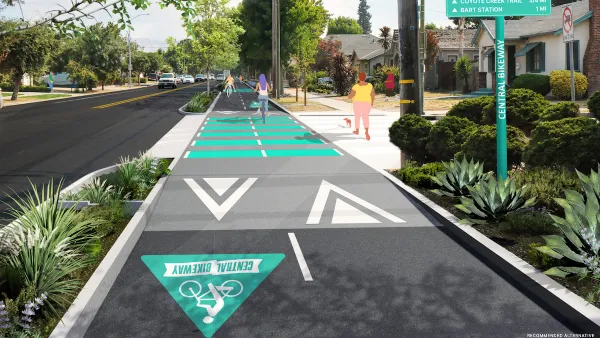In-house data centers owned by several major tech companies likely produce over six times as many greenhouse gas emissions as their owners estimate.

Data centers owned by major tech companies emit significantly more greenhouse gases than the sector admits, reports Isabel O’Brien in The Guardian. “According to a Guardian analysis, from 2020 to 2022 the real emissions from the ‘in-house’ or company-owned data centers of Google, Microsoft, Meta and Apple are likely about 662% – or 7.62 times – higher than officially reported.”
As early as 2022, before the explosion of AI tools like ChatGPT, data centers accounted for 1 percent to 1.5 percent of global electricity consumption. “According to Goldman Sachs, a ChatGPT query needs nearly 10 times as much electricity to process as a Google search, and data center power demand will grow 160% by 2030.”
While some companies say they are ‘carbon neutral,’ experts call this a ‘creative accounting’ strategy. “Amazon – despite all the PR and propaganda that you’re seeing about their solar farms, about their electric vans – is expanding its fossil fuel use, whether it’s in data centers or whether it’s in diesel trucks,” said a representative of Amazon Employees for Climate Justice.
O’Brien warns, “Even though big tech hides these emissions, they are due to keep rising. Data centers’ electricity demand is projected to double by 2030 due to the additional load that artificial intelligence poses, according to the Electric Power Research Institute.”
FULL STORY: Data center emissions probably 662% higher than big tech claims. Can it keep up the ruse?

Planetizen Federal Action Tracker
A weekly monitor of how Trump’s orders and actions are impacting planners and planning in America.

In Praise of Analog Cities: Futureproofing in a Time of Crisis
I didn’t need a pandemic or a war to teach me that smart cities weren’t the future — but it sure drove the message home.

Silicon Valley ‘Bike Superhighway’ Awarded $14M State Grant
A Caltrans grant brings the 10-mile Central Bikeway project connecting Santa Clara and East San Jose closer to fruition.

A Vision for the Future: LA County Releases Draft Sustainability Plan
Los Angeles County has released the draft 2025 OurCounty Sustainability Plan — shaped by community input — and is inviting public feedback through August 22 to help guide the County’s path toward a more sustainable, equitable, and resilient future.

Honoring Elders: California Tribe Breaks Ground on Affordable Housing
The Fernandeño Tataviam Band of Mission Indians is launching its first senior housing project in Los Angeles County, creating 26 affordable units to serve Native elders and address longstanding housing inequities.

Which San Diego County Cities Are Building New Housing?
Chula Vista permitted the most new housing units per capita, while El Cajon is adding the least.
Urban Design for Planners 1: Software Tools
This six-course series explores essential urban design concepts using open source software and equips planners with the tools they need to participate fully in the urban design process.
Planning for Universal Design
Learn the tools for implementing Universal Design in planning regulations.
Heyer Gruel & Associates PA
Yukon Government
New Jersey Institute of Technology
Mpact (founded as Rail~Volution)
City of Camden Redevelopment Agency
City of Norman, Oklahoma
City of Portland
City of Laramie





























